DS 7 Crossback - The gentle conqueror
To mark the 250th anniversary of Napoleon’s birth, we travel from Paris to Marengo in the DS 7 Crossback to get to the bottom of his legendary crossing of the Great Saint Bernard.
My Stages
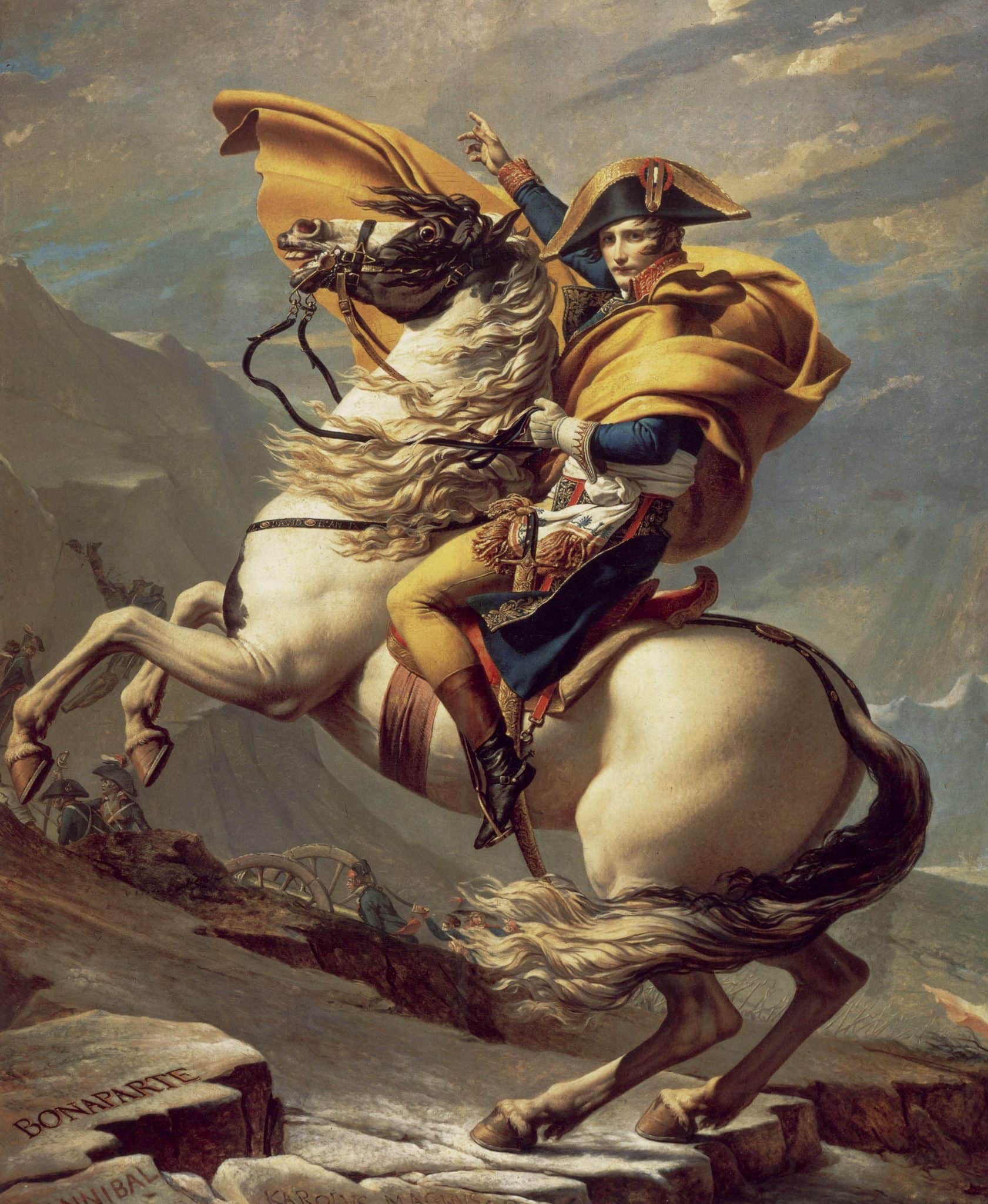
Napoleon's Fate
Napoleon Bonaparte sits majestically on his erect horse. Wrapped in an orange and gold cape, the general rides confident of victory over the Great Saint Bernard at an altitude of 2469 meters to liberate northern Italy from the Austrians in the Second Coalition War.
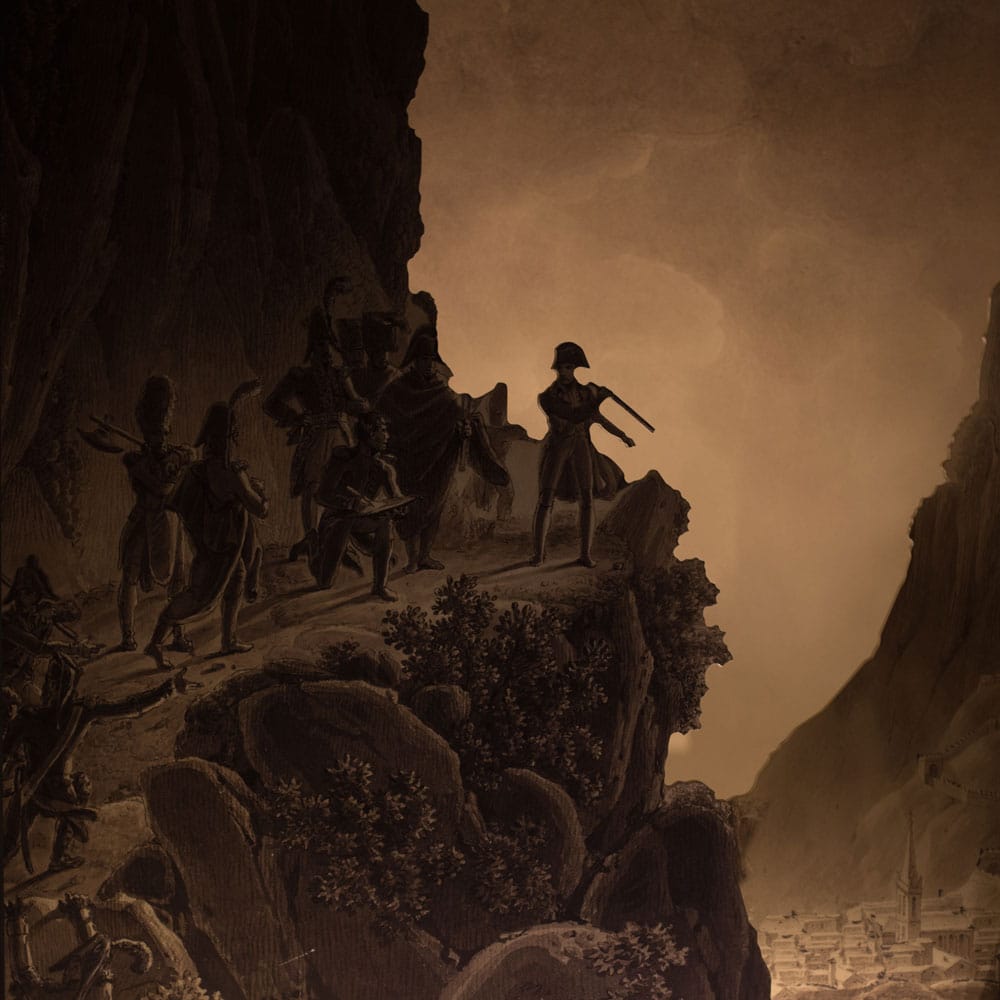
According to legend, the pass was also crossed by Hannibal with his elephants to conquer Rome and Charlemagne to incorporate Italy into his empire.
It was probably Napoleon himself who had his historic crossing in May 1800 immortalized in this famous painting.
Jacques-Louis David created this work of art in the same year.
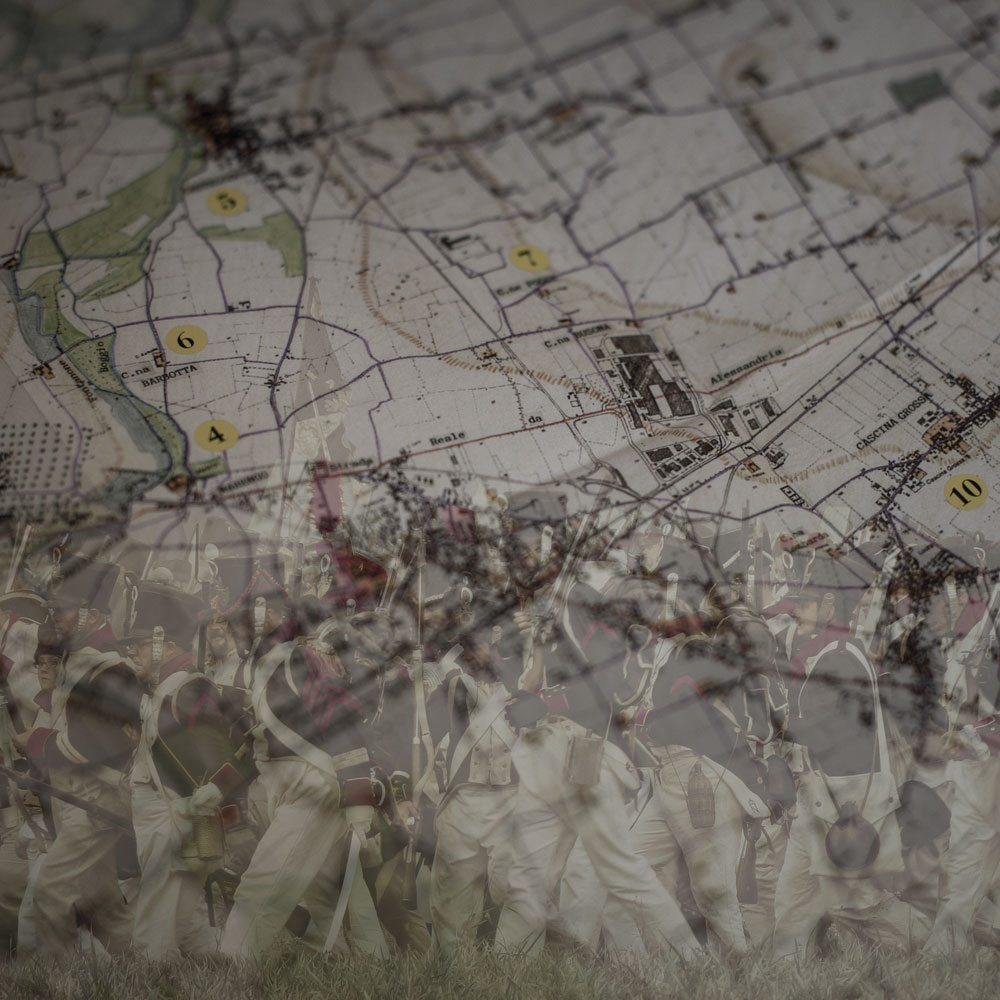
However, the depiction is idealized.
In fact, Napoleon was never to forget this battle, after which he also named his horse and in which he also lost his longtime friend, General Louis Charles Antoine Desaix.
It is even said that his last words before he died were Marengo and Desaix.
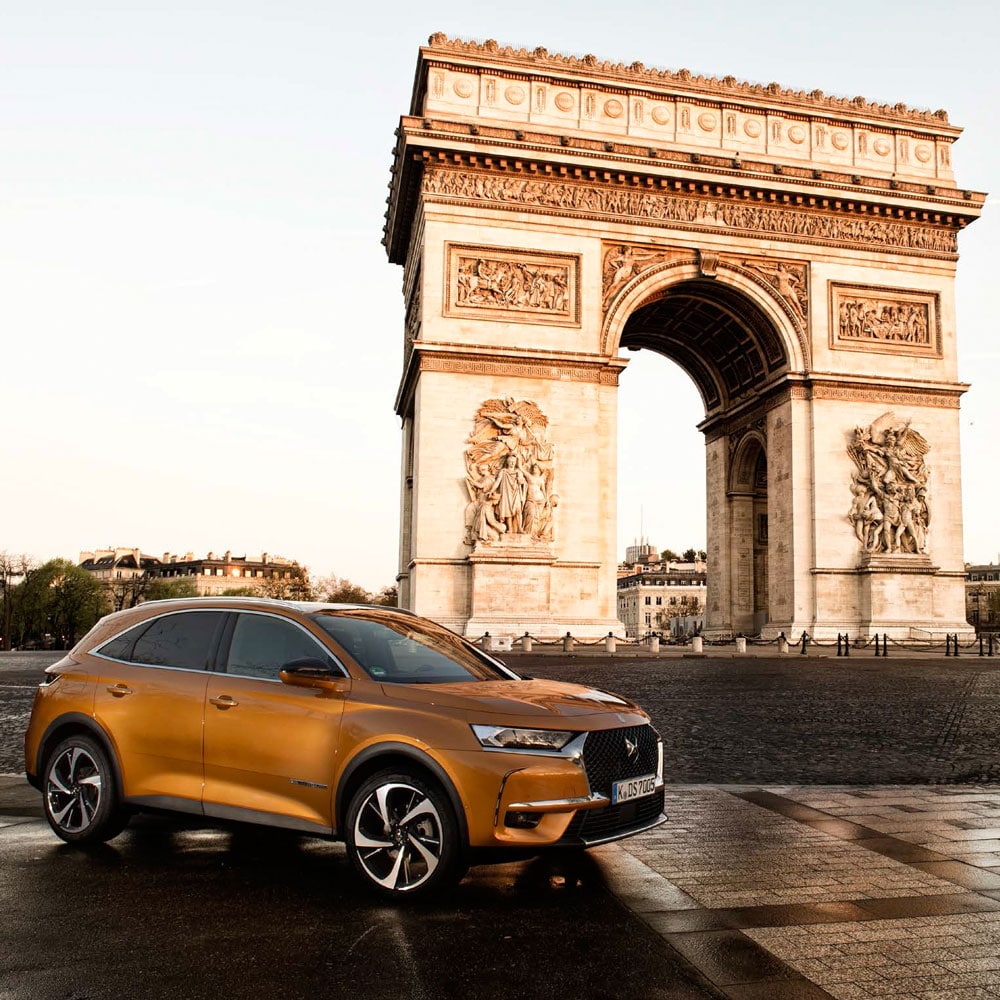
On Bonaparte's footsteps
We followed Bonaparte’s footsteps from Paris to Marengo to learn more about the tales and legends. Our 177-hp companion for the journey is the DS 7 Crossback BLUEHDI 180 EAT8 in Byzantine Gold with OPERA interior design.
It goes directly from Paris to Milan via Lausanne and Villeneuve with stops in Bourg-Saint-Pierre and at the Great Saint Bernard Pass. With cruise control and the DS CONNECTED PILOT, the French sedan drives along the highway almost by itself.
The avant-garde exterior and the royal color, which is confusingly similar to Napoleon’s cape, conspicuously attract the eyes of other road users. This French luxury object on four wheels is a tribute to Paris itself. La Déesse, the goddess, is reborn, only in a different dress, appropriate to the present time.
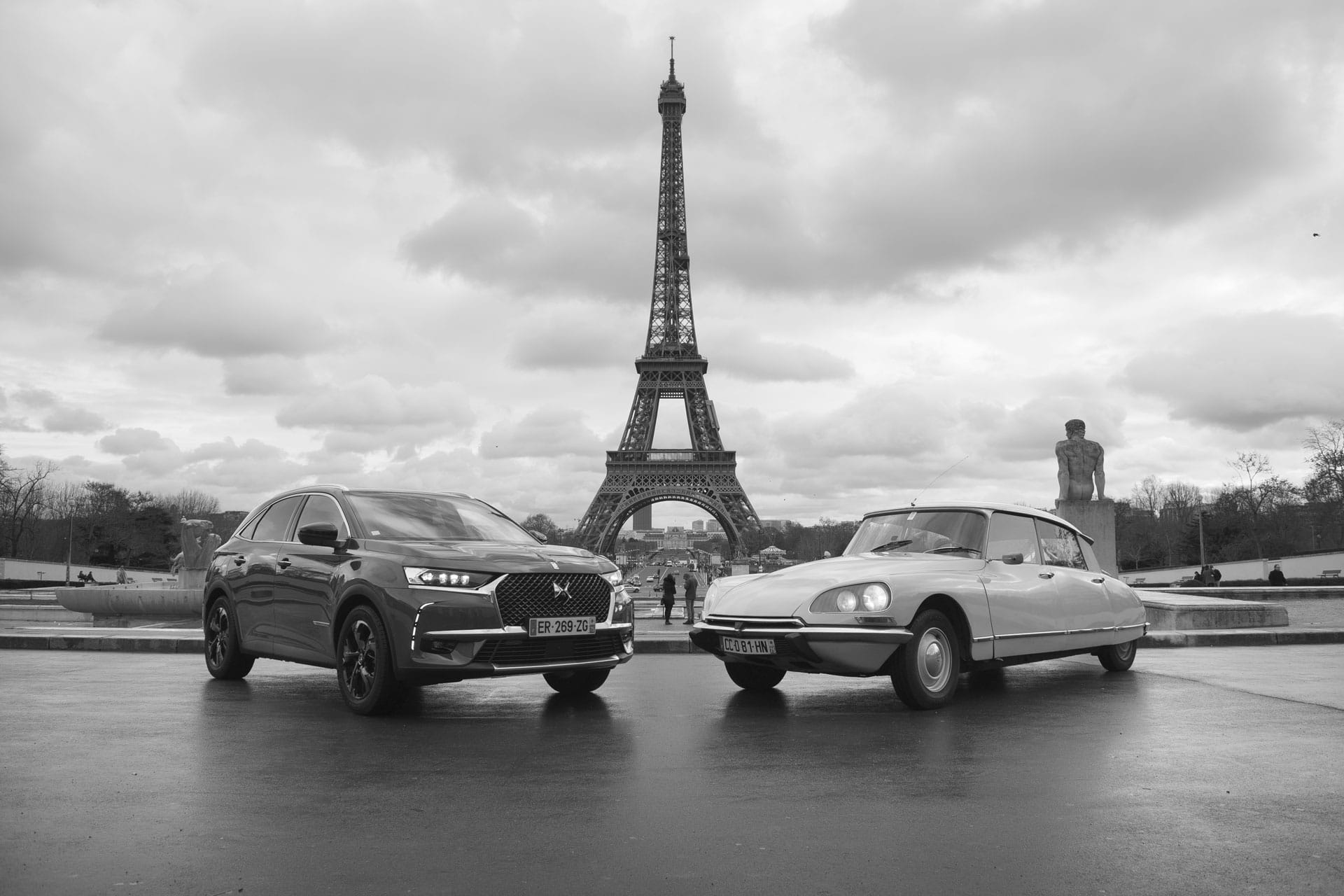
The first Citroen DS19 served as the namesake. Beauty and Style should reflect the spirit of the city, home of haute couture, history and culture.
My companion and I sit in the car in comfortable basalt-black nappa leather seats with a watchband finish. The brand is also the only manufacturer in the world that operates a saddlery in its own design center.
The analog cockpit clock comes from the exclusive watch manufacture B.R.M. The pyramid-shaped guilloche pattern “Clous de Paris” adorns the toggle switches. The famous watchmaker Abraham-Louis Breguet developed this noble-looking process in 1786, which can still be found in watches today. Napoleon and his wife Josephine were also among his regular customers.


Via Bourg-Saint-Pierre to the pass
In the afternoon we reach Bourg-Saint-Pierre, Napoleon’s last stop before he rode over the pass. It seems as if time has stopped here at 1600 meters above sea level. A sign and the two-pointed hat at the entrance announce that the village served as headquarters for the general and his troops. The French troops took important equipment and services that left a financial loss to the village.
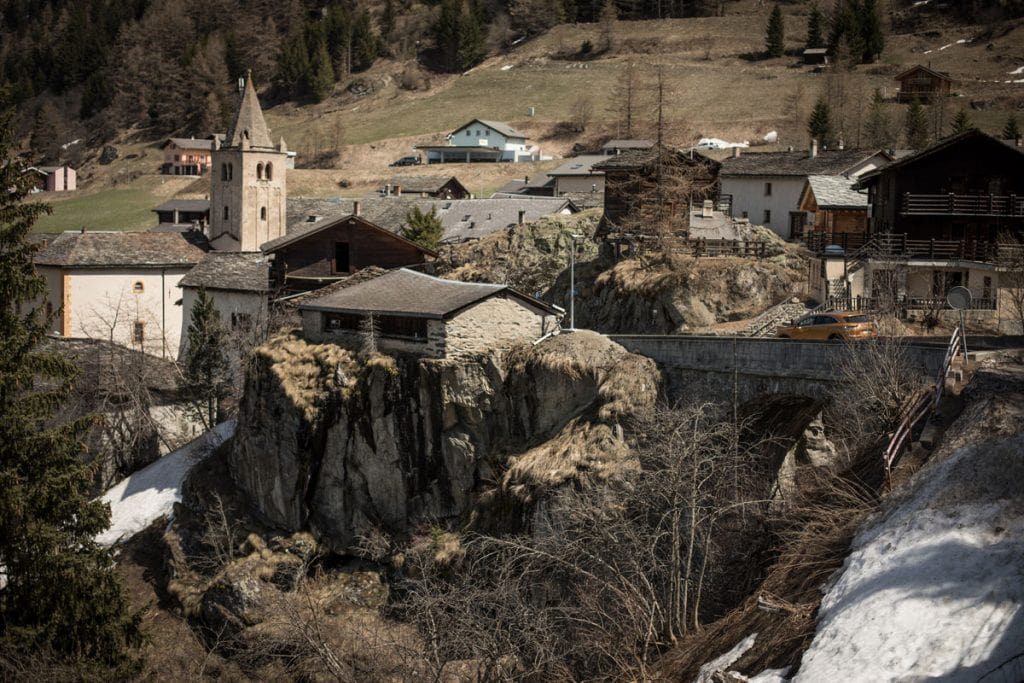
Napoleon wrote to the inhabitants that he would pay for it, of course. But the promised payment failed to materialize. The dispute was only symbolically settled in 1984, when President Mitterand gave the village a medallion 80 centimeters in diameter representing Napoleon.
Only 13 kilometers separate us from the pass. However, we will not reach him. After about ten kilometers, it’s over. The entire pass is still under a high blanket of snow even in April.
We have to take the tunnel to get further. Napoleon would certainly have been grateful for the alternative route and a warm means of transport. When he crossed the pass on May 20, 1800, he and his troops, fully packed, had to overcome a three-foot-high snowpack.
The sun has set in the meantime and it is getting dark as we drive on to Milan. I turn on the light. Thanks to the laser engraving, the six narrow LED piggybacks are reminiscent of cut gemstones and pay homage to jewelry manufacturers. The special feature: they rotate 180 degrees when starting the car, while purple light comes on. The design of the taillights is reminiscent of a snake or dragon skin in 3D.
Merengo Homestead
Despite 14 hours of travel, we are not tired when we arrive. The next morning we continue to Marengo to the museum that tells the story of the battle. It has become as expected according to the research. Opening hours: Saturdays and Sundays from 15.00 – 18.00. We look around. An old homestead where an elderly gentleman is gardening is next to it. We ask him if the museum would open today. He grins. Maybe. The institution had no money and guests were also scarce. No wonder, because hardly anyone knows of its existence.
The Lord asks us if he can help us. We talk in French. Pierreguiseppe Negri finds our story exciting. His homestead, inherited from his grandfather and father, is the former accommodation of Napoleon and his troops. In his basement still hangs a small oil lamp from that time. The likeable pensioner laughs heartily and is pleased with my enthusiasm. He leads us to the place where the troops slept. Today he uses the shed as a storage room. A thick high wall surrounds the property. There are still cannonballs stuck on the outside, probably fired by the Austrians. While his ancestors were farmers, he became an engineer. Although the homestead is a lot of work, he keeps it for nostalgic reasons.
Merengo Museum
Punctually at 15.00 the gates to the parking lot of the museum actually open. I wonder if we can drive the car into the courtyard to the statue of Napoleon to take pictures? An enthusiastic ‘Ma certo’ is the answer. His charisma also works outside the borders of France! The old stately villa was turned into a museum shortly after the battle. The ocher-yellow facade is the perfect backdrop for our golden star on four wheels. He seems to shine at the foot of the great general, consul and emperor of France.
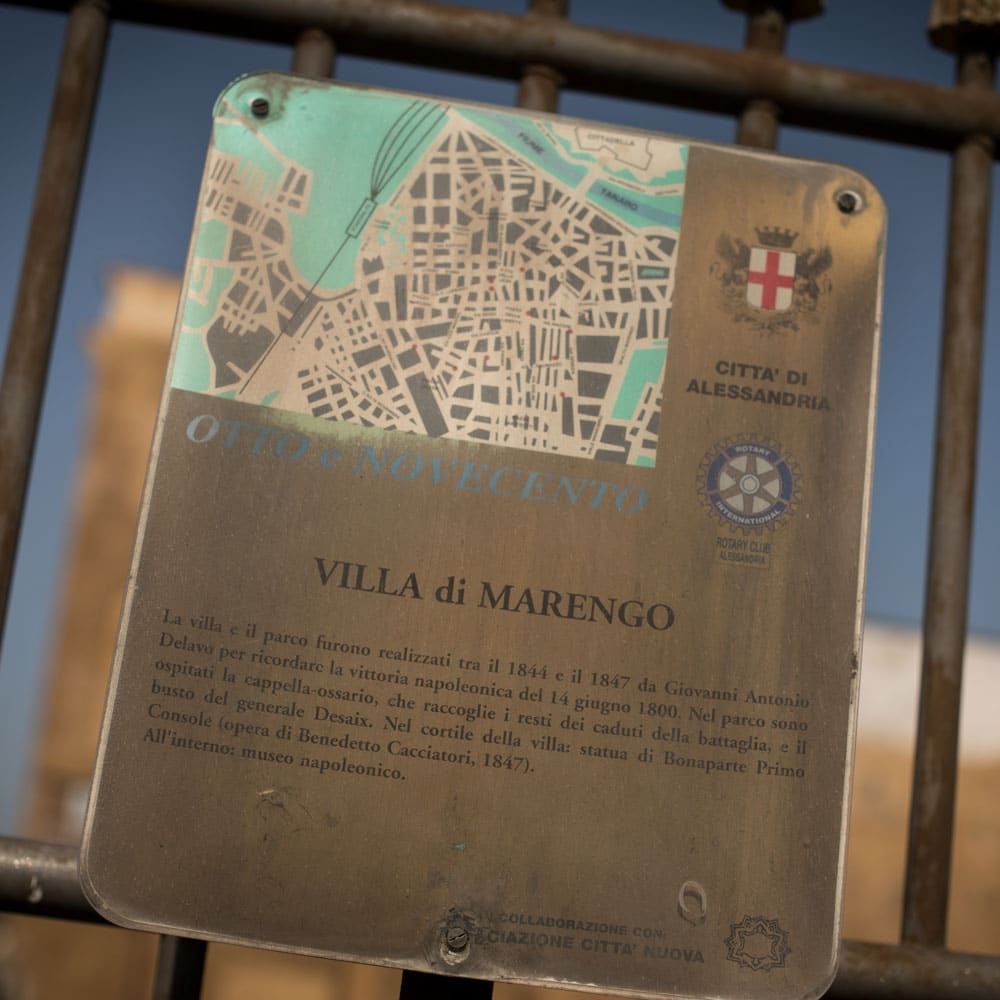

The curator Giacomo Ferrando tells that in 1800 there was unusually bad weather in Switzerland and Italy. As we crossed the pass, it snowed incessantly. Napoleon did not ride a horse, as depicted in the painting, but a mule. The guns had to be disassembled for transport. The pipes, which were placed in hollowed-out tree trunks, were pulled up the pass by 100 men at a time. On June 14, the battle began in rainy Marengo. Bonaparte won thanks to his generals like Desaix, who fell in battle. He never got over the death of his good friend and longtime companion. He had him buried in the chapel at Great Saint Bernard. About 13,000 soldiers lost their lives in this battle. Ferrando shakes his head: “Even today, when farmers dig up their fields, they find the bones of men and horses from that time. Unofficially, surely more had to give their lives.”
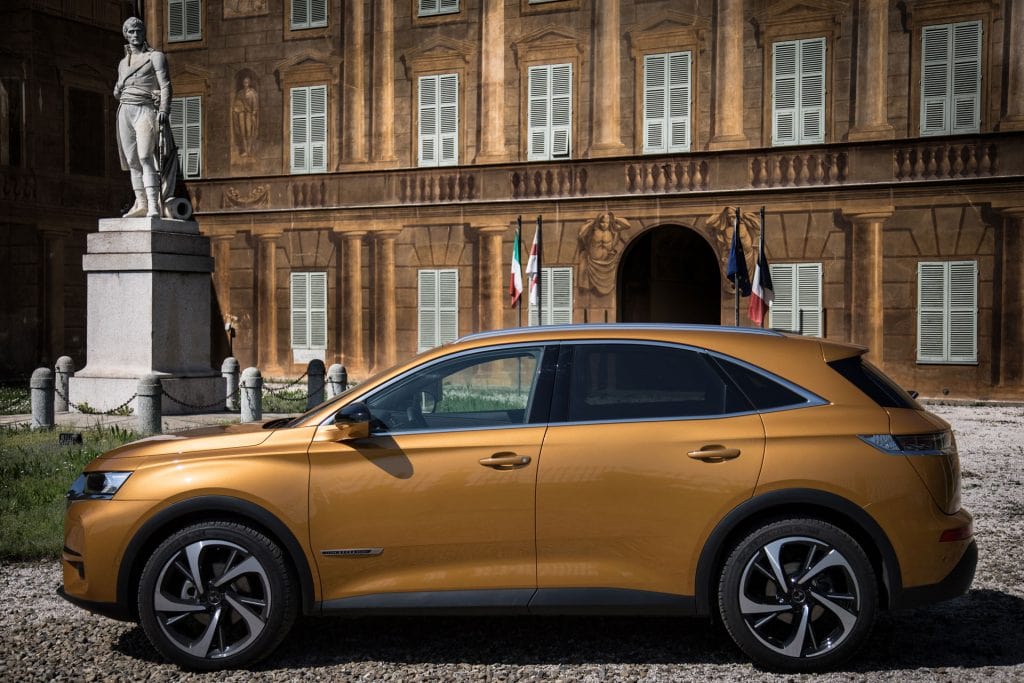
We drive our DS 7 Chrossback out of the courtyard. It glides peacefully over the garden of the museum, whose entrance is adorned by a pyramid. While 250 years ago Napoleon’s arrival was either a curse or a blessing, our DS 7 Crossback brings joy and connects people from different countries. Much has changed for the better. And yet the two Frenchmen have something in common. Through their charisma, both leave a lasting impression.
